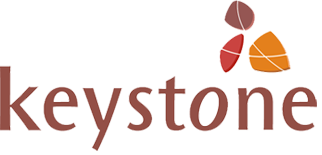 If you’re one of the two billion people who own a smartphone, it likely comes with a weather app. The app is probably equipped with convenient features like maps that give you all sorts of forecast spectrums ranging from temperatures and uv index dangers, to allergen warnings. You can share this handy weather snapshot on social media, or text it to a friend to suggest moving that potluck indoors for the upcoming rainy Saturday.
If you’re one of the two billion people who own a smartphone, it likely comes with a weather app. The app is probably equipped with convenient features like maps that give you all sorts of forecast spectrums ranging from temperatures and uv index dangers, to allergen warnings. You can share this handy weather snapshot on social media, or text it to a friend to suggest moving that potluck indoors for the upcoming rainy Saturday.
We think nothing of this handy tool that we generally glance at once a day, and yet not long ago, this would have been considered a ‘god-like’ ability. Instant knowledge that says so much in such a simple graph. Regularly updated information that keeps us keenly aware of how to plan our daily actions going forward.
These forecasts and map images were brought into existence because of the vast amount of measuring tools, meteorologists and incredible amounts of data that is collected. To forge a prediction, one must collect the seemingly chaotic compilation of data first, and then see what it all says.
 This concept of collecting vast amounts of raw data to form forecasts and build a conclusive consensus, is being integrated into almost every aspect of life, and major corporations understand the advantage of having such foresight and perspective. They collect as much data as they can to gain competitive advantage.
This concept of collecting vast amounts of raw data to form forecasts and build a conclusive consensus, is being integrated into almost every aspect of life, and major corporations understand the advantage of having such foresight and perspective. They collect as much data as they can to gain competitive advantage.
A very recent invention supplied by Google, is a language translation tool, and the reason for its ability to function as well as it does is all thanks to big data. Data, which includes errors and mistakes, in all of its raw and messy goodness. With the right application, what starts out seemingly chaotic begins to yield helpful patterns which, with time, permission (allowing all outcomes to reveal themselves), and ingenuity, they can provide crazy pinpoint accurate results in the form of ‘god-like’ abilities, like snapping a picture of a sign and having your phone translate and transform the photo of the sign into your own language.
So too, this same concept and process can be applied like a finger on the pulse of the globe and the citizens who face all of the possibilities before them, for good or ill. This awareness can be used productively by goodwill-focussed organizations that are striving to achieve social change.
 The crucial ingredients that can be applied to this swirled concoction of organized stewardship, are a feedback loop its resulting benchmark data, and tools for exploring it all. These results, distilled into snapshots and graphs, can function much like taking a temperature of ‘progress’ and summarizing a consensus of voices, much like a weather map summarizes a consensus of vast amounts of climate data. In a glance, the reality of any situation can be assessed and forecasted. People who want to help with elbow grease or by financial contribution will know exactly where these efforts will be most effective, and where assistance needs accountability to correct course.
The crucial ingredients that can be applied to this swirled concoction of organized stewardship, are a feedback loop its resulting benchmark data, and tools for exploring it all. These results, distilled into snapshots and graphs, can function much like taking a temperature of ‘progress’ and summarizing a consensus of voices, much like a weather map summarizes a consensus of vast amounts of climate data. In a glance, the reality of any situation can be assessed and forecasted. People who want to help with elbow grease or by financial contribution will know exactly where these efforts will be most effective, and where assistance needs accountability to correct course.
Keystone’s Constituent Voice, a systematic listening methodology, is a key component for collecting performance data through dialogue with those you aim to serve. These feedback loop results can be formed into sophisticated and yet simple graphs that act as charitable climate snapshots using the Feedback Commons explorer tool.
